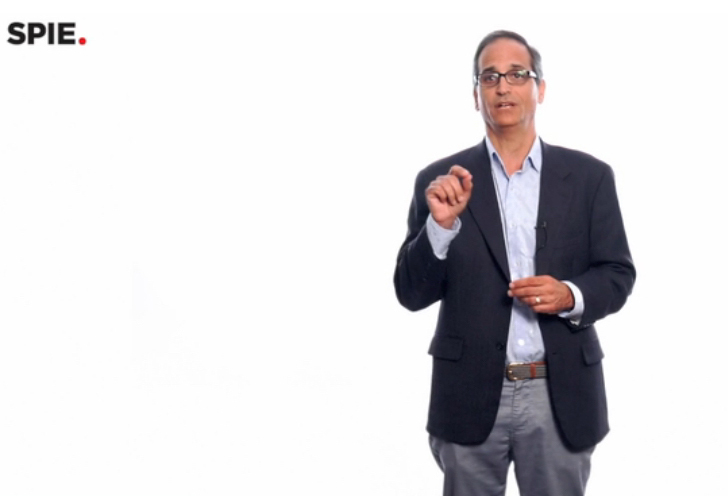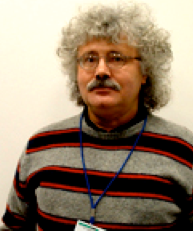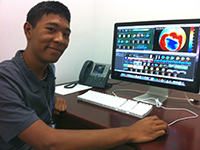News | March 24, 2011
In Memoriam: The Passing of AIRS Project Founder Dr. Moustafa T. Chahine

It is with great sadness the AIRS Project announces the passing of AIRS mission visionary and founder, Team Leader Dr. Moustafa Chahine. Known affectionately as "Mous" to friends and colleagues, Mous leaves behind a distinguished legacy of science, discovery, mentorship, and deep friendship.
It was in 1978 that Mous received his earliest funding for the AIRS instrument proposal as part of The National Climate Program Act, and it was through his perseverance and dedication that the mission gained momentum and culminated in the launch of the AIRS instrument into Earth orbit on May 4, 2002.
Mous Chahine grew up in Lebanon, and he came to the United States as a freshman to attend the University of Washington where he obtained a bachelor of science in 1956. Four years later he received a doctorate in fluid physics from the University of California at Berkeley and joined JPL as a research scientist. From 1975 to 1978 he headed the Planetary Atmosphere Section, and in 1978 was responsible for establishing the Division of Earth and Space Sciences at JPL. In 1984 he was appointed Jet Propulsion Laboratory's Chief Scientist, a position he held for 17 years.
Throughout his time at the lab, Mous was directly involved in research in atmospheric sciences and remote sensing. In 1969 he developed an exact mathematical method for the inverse solution of the full radiative transfer equation, called the Relaxation Method. The method is used today for deriving atmospheric temperature and composition profiles from satellite observations of Earth, Venus, Mars, and Jupiter. He then developed a multispectral method using infrared and microwave observations of remote sensing of clouds. These methods were applied in 1980 to provide the first global distribution of Earth's surface temperature. In 1988 NASA selected his instrument AIRS as a facility instrument to study the Earth's atmosphere as part of NASA's Earth Observing System.
Mous's passion for science never wavered, and he continued to push the science coming from the AIRS weather and climate instrument. Data from AIRS was found to improve weather forecast skill, and the mission became such a success that former NOAA Administrator Vice Admiral Conrad C. Lautenbacher stated, "The AIRS instrument has provided the most significant increase in forecast improvement in this time range of any other single instrument." Mous continued to push the science, and it was discovered that beyond it's core mission, AIRS data could also be used to measure global carbon dioxide.
Mous was a member of the National Academy of Engineering and the International Academy of Astronautics. He was a Fellow in the American Physical Society, the American Association for the Advancement of Science, the American Geophysical Union and the American and British Meteorological Societies, and also was a Full Member of the Lebanese Academy of Sciences. He received NASA's Exceptional Scientific Achievement Medal (1969), Outstanding Leadership, and Exceptional Achievement Medals. He was also a recipient of the William T. Pecora Award from NASA and the U.S. Department of the Interior, the Jule G. Charney Award of the American Meteorological Society, the Losey Atmospheric Sciences Award of the American Institute of Aeronautics and Astronautics, the William Nordberg Medal from the Committee on Space Research and the NASA Medal for Exceptional Scientific Achievements (2007). In 2005, Mous was one of fifteen international participants invited to speak at the Pontifical Academy of Sciences "Working Group on Water and the Environment", which took place at the Casina Pio IV inside Vatican City. The working group was assembled to address the scientific frontiers of the main environmental issues related to the impact of hydrologic dynamics on sustainable development. Mous considered his participation in this event as one of the highlights of his career.
The accolades continued and in 2010, Mous was the recipient of the prestigious George W. Goddard Award which is given annually by the International Society for Optical Engineering in recognition of exceptional achievement in optical or photonic instrumentation for aerospace, atmospheric science or astronomy. The award honors the recipient "for the invention and development of a new technique, photonic instrumentation, instrument or system".
And just earlier this week, Mous was awarded another honor. The Program Chairs for the 15th Conference on Integrated Observing and Assimilation Systems for the Atmosphere, Oceans and Land Surface presented him with their first-ever Outstanding Presentation Award for his presentation "AIRS near-surface atmospheric CO2 for modeling, transports and assimilation" as part of the American Meteorological Society 91st Annual Meeting. As program chair Dr. Robert Atlas stated, "the program chairs looked at each other while Mous was speaking, and we realized this was a uniquely special presentation."
For all those who knew and cared about Mous, we know he would want to pass on to all the words he used to start off every science team meeting throughout the years:
"ALWAYS MAKE PROGRESS"
[[IMAGE||/system/internal_resources/details/original/62_DSCF0042.jpg||Left||740||DSCF0042||||||553||]]Rest in peace, Mous.
"My research work determines where I am going to be and what I am going to be doing during most of my daily life. As such, it constitutes for me a framework for interactions and involvement because it imposes a discipline. Yet, from time to time I still take a moment to reflect, to think big and to think small about many things: how to venture and how to face disappointments, and how to become the person I want to be."
- Mous Chahine
Mous Chahine Memorial Wall







